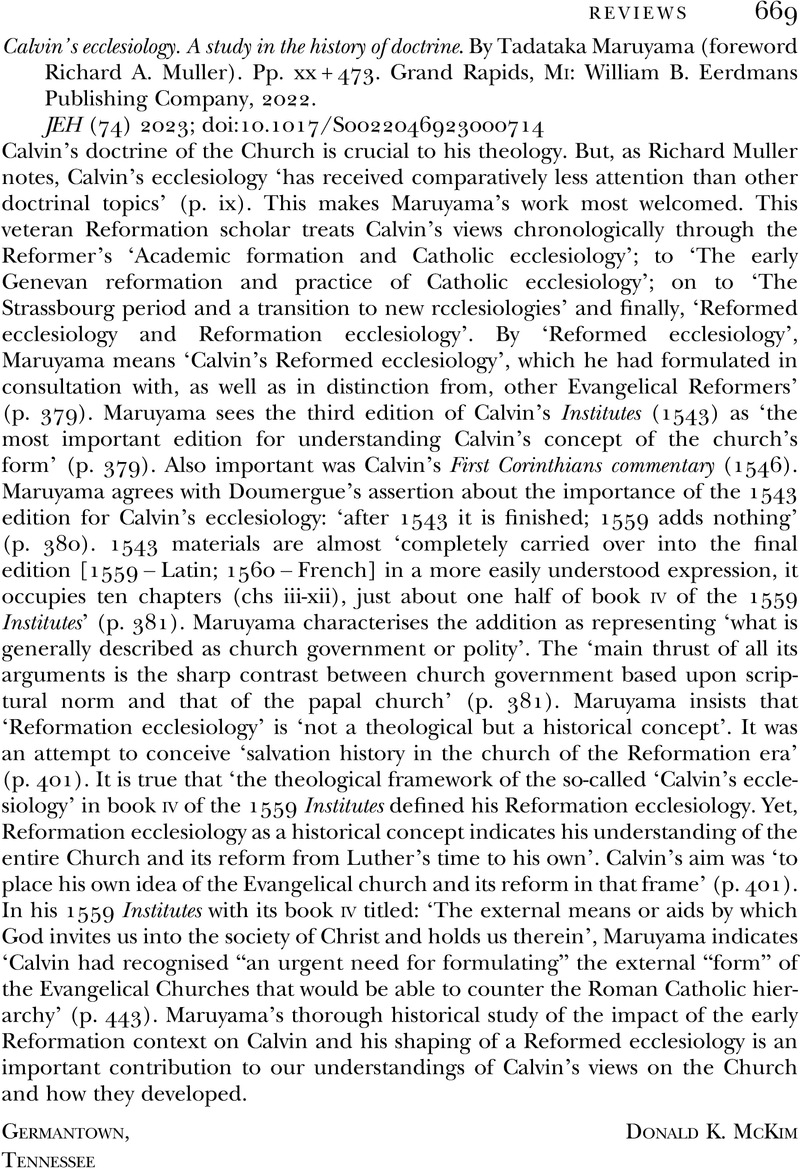No CrossRef data available.
Article contents
Calvin's ecclesiology. A study in the history of doctrine. By Tadataka Maruyama (foreword Richard A. Muller). Pp. xx + 473. Grand Rapids, Mi: William B. Eerdmans Publishing Company, 2022.
Review products
Calvin's ecclesiology. A study in the history of doctrine. By Tadataka Maruyama (foreword Richard A. Muller). Pp. xx + 473. Grand Rapids, Mi: William B. Eerdmans Publishing Company, 2022.
Published online by Cambridge University Press: 05 July 2023
Abstract
An abstract is not available for this content so a preview has been provided. Please use the Get access link above for information on how to access this content.

- Type
- Reviews
- Information
- Copyright
- Copyright © Cambridge University Press 2023



